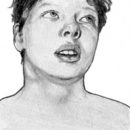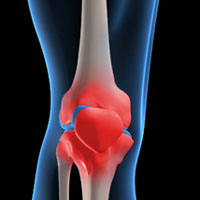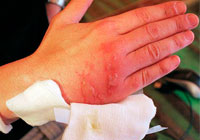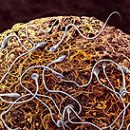Trophic ulcers on legs can be a manifestation of such a severe disease like diabetes. These ulcers have their own characteristics, and despite the absence of pain, gradually lead to gangrene. Read more about the manifestations and treatment of diabetic ulcers, read in the article.
Content
One of the reasons for the appearance of trophic ulcers is diabetes mellitus, in which the vessels are affected. The damage to blood diabetes is captured by both arteries and small vessels. Reducing blood flow leads to the development of samples of sections of soft fabrics of the foot. In addition, diabetes mellitus much worsens the course of atherosclerosis, the disease that can in itself lead to the appearance of trophic ulcers. Aggravates this process to reduce immunity and joining infection.
Manifestations of diabetic ulcers
Diabetic ulcers arise as a result of the lesion of large and small arteries, and may also be a consequence of diabetic nerve damage. Diabetic ulcers, as a rule, are localized on the last phalanges of the fingers of the foot. Often reveal a concomitant fungal defeat of nails and leather feet. In diabetes, peculiar corns are often formed on the sole, the damage of which leads to the formation of an ulcer. Their feature: the inconsistency of local manifestations (ulcers can reach significant sizes and depths) of the severity of pain (as a result of damage to nerves, it may be absent). The appearance of diabetic ulcers is often preceded by rubbing, minor injuries, abrasions, burns.
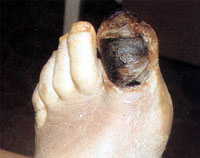 The main problem with diabetes mellitus is poor wound healing and reduced immunity. Tissue with diabetes is very sensitive to injury, so they require careful relationship. It is best to treat such ulcers comprehensively.
The main problem with diabetes mellitus is poor wound healing and reduced immunity. Tissue with diabetes is very sensitive to injury, so they require careful relationship. It is best to treat such ulcers comprehensively.
First of all it is necessary to lower blood sugar levels. When the diabetic ulcer appears, a person must be translated into insulin, regardless of the form of diabetes. Prescribed drugs that contribute to the absorption of glucose, group vitamins in. Correction of blood flowing, coagulation systems. If there is inflammation or damage to fungus - antibiotics and antifungal drugs are prescribed. Stimulation of the immune system with powerful immunomodulators.
The second component of treatment is the reduction of blood flow. For this purpose, powerful vascular drugs are used. If arterial lesions are very significant, surgical and microsurgical methods of blood flow recovery. The main and efficient method of correction of arterial blood flow remains autosenotic micrunctivation, in which new vessels created from their own veins of the patient are carried out bypassing the affected arteries.
The third component is the treatment of diabetic ulcers and gangrene. It is a complex problem. Diabetes fabrics are very sensitive to injury. On the fitting and fingertips and foot and foot are removed only dead fabrics. After cleansing the wounds, plastic surgery methods are used to close the skin defects using skin transplantation.
Only the combination of all these components and on time began to be reserved by the patient from gangrene and amputation.


